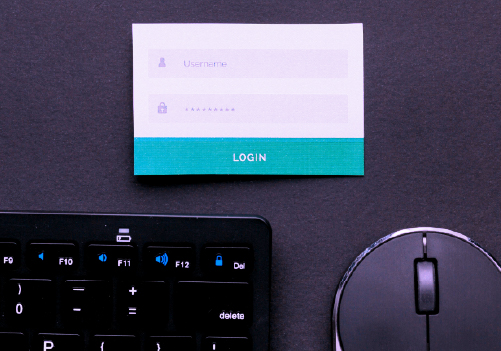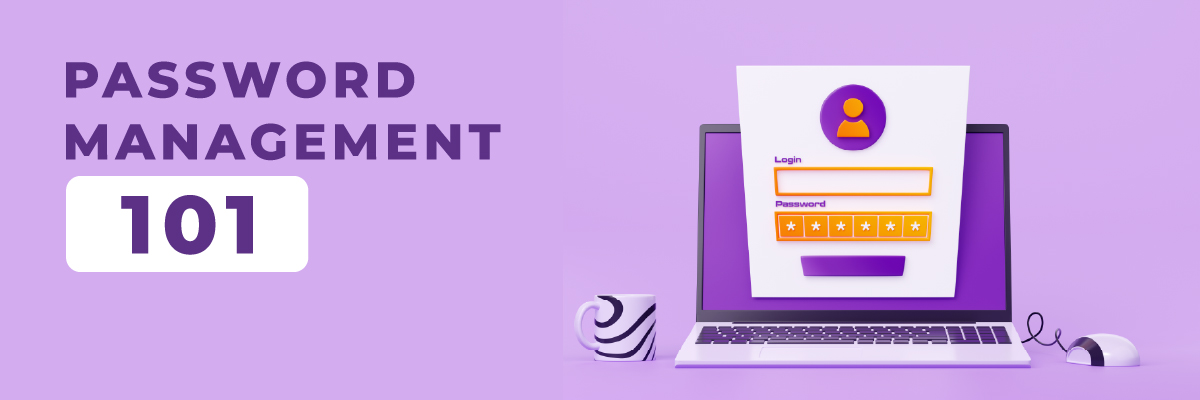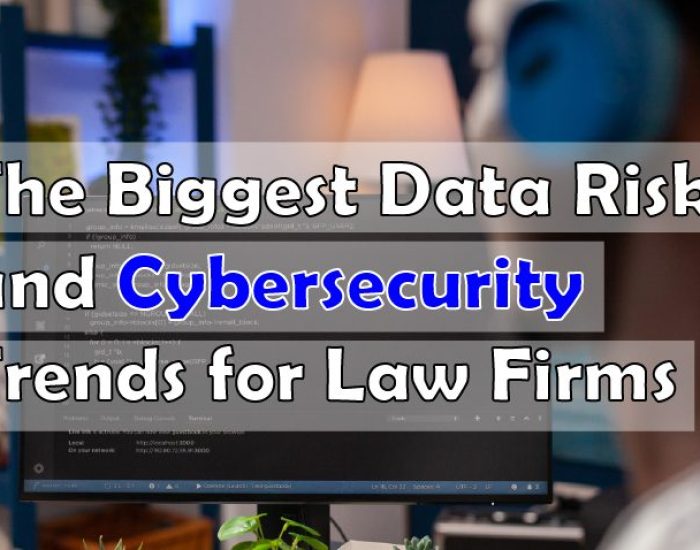Password Management 101: Tips for Creating, Storing, and Remembering Passwords
Today our lives are intricately woven into the fabric of the internet, and the security of our personal information has become more critical than ever. One of the primary lines of defense in safeguarding our online identities is the strength of our passwords. However, with the increasing sophistication of cyber threats, the task of creating, storing, and remembering secure passwords can seem daunting.
This blog aims to demystify the process of password management by providing comprehensive tips and strategies for creating, storing, and remembering passwords effectively. Whether you’re a seasoned internet user or just starting to navigate the online realm, understanding the importance of strong passwords and implementing best practices in password security is paramount in protecting your digital assets and privacy.
Creating Strong Passwords
The strength of your passwords serves as the first line of defense against unauthorized access to your accounts and sensitive information. Creating strong passwords is essential in thwarting cybercriminals’ efforts to exploit weak authentication measures. In this section, we’ll explore the key principles and strategies for crafting robust passwords that resist brute-force attacks and enhance your overall security posture.
1. Length and Complexity:
- Emphasize the importance of password length, as longer passwords are generally more resistant to hacking attempts.
- Encourage the use of a mix of character types, including uppercase letters, lowercase letters, numbers, and symbols, to increase complexity.
- Provide examples of strong password formats and emphasize the need to avoid predictable patterns or common phrases.
2. Avoiding Common Patterns and Easily Guessable Information:
- Highlight the risks associated with using easily guessable information such as birthdays, names of family members, or common dictionary words.
- Discuss the prevalence of password-cracking techniques, such as dictionary attacks and social engineering, and their ability to exploit common patterns.
- Encourage users to steer clear of sequential or repetitive characters, keyboard patterns, and other predictable sequences.
3. Unique Passwords for Each Account:
- Stress the importance of using unique passwords for each online account to mitigate the impact of a potential data breach.
- Introduce the concept of password reuse and its inherent risks, including the domino effect of compromised accounts.
- Advocate for the adoption of password managers as a solution for generating and managing unique passwords across multiple accounts.
4. Importance of Regularly Updating Passwords:
- Discuss the rationale behind regularly updating passwords to mitigate the risk of password-based attacks.
- Offer guidance on establishing a schedule for password updates and the frequency at which passwords should be changed.
- Highlight the role of security hygiene in maintaining strong passwords and reducing the likelihood of unauthorized access.
By adhering to these principles and implementing best practices in password creation, users can significantly enhance the security of their online accounts and minimize the risk of falling victim to cyber-attacks. In the next section, we’ll delve into the various methods for securely storing passwords and managing them effectively.
What’s the difference between a password and a privileged password?
A password is a standard authentication method used to verify a user’s identity. A privileged password, however, grants elevated access to sensitive systems or data, typically used by administrators or high-level users. The benefits of MFA (multi-factor authentication) are especially crucial for securing privileged passwords, as it adds an extra layer of protection beyond just the password. Implementing an MFA setup guide helps ensure that both regular and privileged accounts are safeguarded against unauthorized access, enhancing overall security and reducing the risk of breaches.
Storing Passwords Securely
When it comes to keeping passwords safe, secure storage is essential. Here’s how to ensure passwords are stored securely:
1. Avoid Written Passwords:
- Refrain from writing passwords on physical paper or storing them in digital documents, as these can easily be lost or accessed by unauthorized individuals.
- Memorization isn’t recommended due to the risk of forgetting or mixing up passwords. Instead, opt for secure storage solutions that offer encrypted storage and easy retrieval.
2. Utilize Password Managers:
- Choose a reliable password manager software that offers robust security features such as encryption, multi-factor authentication, and secure storage.
- Password managers not only store passwords securely but also generate strong, unique passwords for each account, eliminating the need to remember them all.
3. Implement Two-Factor Authentication (2FA):
- Enhance the security of your accounts by enabling two-factor authentication (2FA) wherever possible.
- Utilize various 2FA methods such as SMS codes, authenticator apps (e.g., Google Authenticator), or hardware tokens to add an extra layer of protection beyond passwords.
4. Prioritize Encryption and Secure Storage:
- Ensure that the chosen password manager utilizes strong encryption protocols (e.g., AES-256) to safeguard stored passwords from unauthorized access.
- Verify that passwords are securely stored on the password manager’s servers or locally on your device, minimizing the risk of data breaches or leaks.
By following these practices, you can effectively protect your passwords from unauthorized access and mitigate the risk of security breaches or identity theft.
Best Practices for Password Management
Implementing strong and secure password management practices is crucial in safeguarding your online accounts and personal information. Here are some best practices to follow:
1. Use Unique and Complex Passwords:
- Generate unique passwords for each of your accounts to prevent a single breach from compromising multiple accounts.
- Create complex passwords that include a combination of uppercase and lowercase letters, numbers, and special characters to increase their strength and resilience against brute-force attacks.
2. Enable Two-Factor Authentication (2FA):
- Enable two-factor authentication (2FA) wherever possible to add an extra layer of security to your accounts.
- Choose authentication methods such as SMS codes, authenticator apps, or hardware tokens to verify your identity beyond just a password.
3. Regularly Update Passwords:
- Periodically update your passwords to mitigate the risk of compromised credentials.
- Set reminders to change passwords every few months or immediately after any security incident or data breach.
4. Securely Store Passwords:
- Utilize a reputable password manager to securely store and manage your passwords.
- Ensure that the password manager employs strong encryption methods to protect your stored passwords from unauthorized access.
5. Be Wary of Phishing Attempts:
- Stay vigilant against phishing attempts by verifying the authenticity of emails, links, and messages requesting your login credentials.
- Avoid clicking on suspicious links or providing personal information to unknown or untrusted sources.
6. Educate Yourself and Others:
- Stay informed about the latest cybersecurity threats and trends to better protect yourself online.
- Educate friends, family, and colleagues about the importance of strong password management practices and how to recognize and avoid common security risks.
7. Monitor Account Activity:
- Regularly monitor your account activity for any unauthorized access or suspicious behavior.
- Set up alerts or notifications for unusual login attempts or changes to your account settings.
By following these best practices, you can significantly enhance the security of your online accounts and reduce the risk of falling victim to cyber threats and identity theft. Remember, password management is essential in today’s digital world to safeguard sensitive information and maintain privacy.
The Don’t’s of Password Management
Updating password policies involves discarding outdated practices that no longer effectively enhance cybersecurity. One such obsolete recommendation is rigid password composition rules, prescribing specific character types and lengths. Instead, modern approaches favor the use of complex passwords generated by password management tools, ensuring robust security without burdening users with arbitrary requirements.
Similarly, the use of password hint fields and knowledge-based access, including security questions based on easily discoverable personal information, is discouraged. Password hints often undermine security by inadvertently revealing passwords, while security questions pose significant risks given the widespread availability of personal details on social media platforms.
In place of these ineffective methods, organizations should prioritize password rotation and the adoption of modern best practices. This includes encouraging the use of randomly generate complex passwords, regular password rotation intervals, and multi-factor authentication (MFA) to bolster security defenses.
By implementing these updated password policies best practices, organizations can enhance their cybersecurity posture and better protect sensitive data from unauthorized access and cyber threats.
Conclusion
Safeguarding your online accounts through strong password management practices is paramount in protecting your personal information and digital assets from cyber threats. By following the best practices outlined in this guide, including using unique and complex passwords, enabling two-factor authentication, regularly updating passwords, securely storing credentials, being vigilant against phishing attempts, educating yourself and others, and monitoring account activity, you can significantly bolster your online security posture.
At Protected Harbor, we understand the importance of cybersecurity and the critical role that password management plays in safeguarding individuals and businesses alike. As one of the top Managed Service Providers (MSP) and cybersecurity providers in the US, we have always prioritized the safety and privacy of our clients. With our expertise and dedication to cybersecurity, we strive to empower individuals and organizations to navigate the digital landscape with confidence and peace of mind.
Ready to enhance your cybersecurity strategy? Contact Protected Harbor today for a free IT Audit and learn more about our comprehensive cybersecurity solutions and how we can help safeguard your digital assets.






